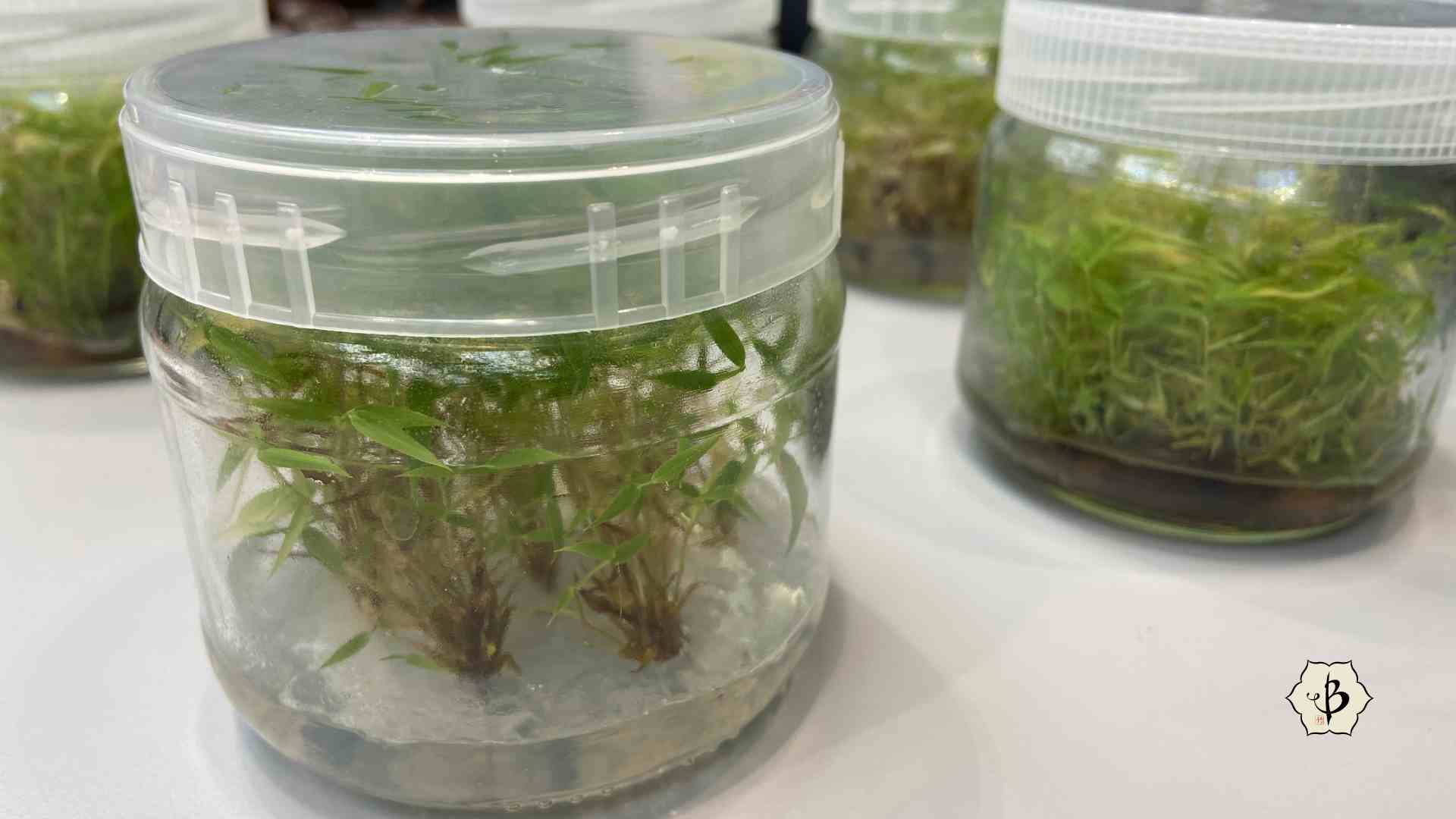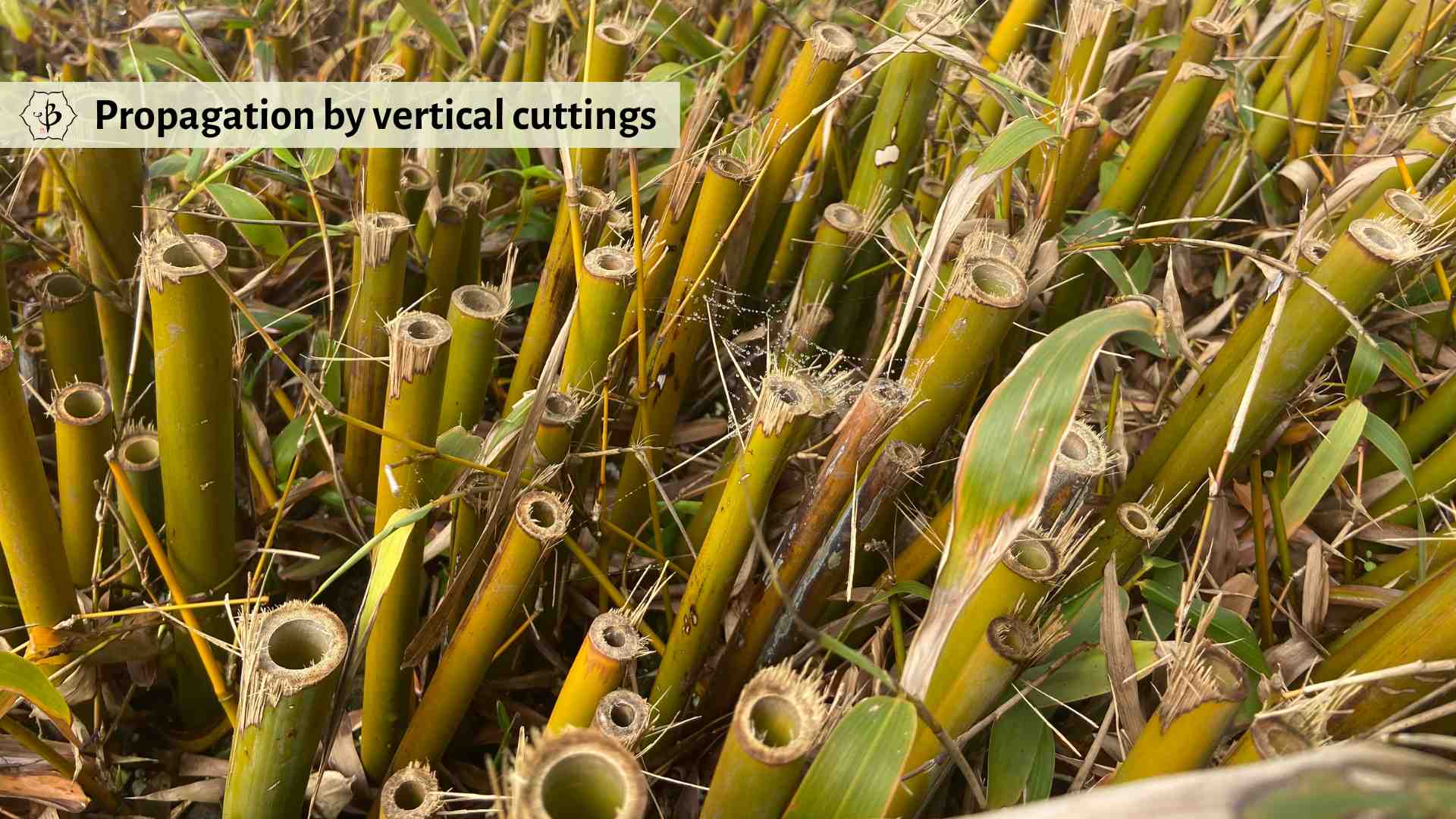I’m sure you’ve noticed by now that bamboo is a pretty big deal. But when you’re ready to go big with bamboo, you might want to look at something very small. Micropropagation is a fairly modern technique for reproducing plants, and the method is currently gaining some popularity. So what exactly is micropropagation and how relevant is it with growing bamboo?
Micropropagation is a process that involves using very small pieces, or tissue cultures, from a plant, and using them to create new plants. Commercial-scale farms and nurseries use this technique for all kinds of plants, including (but not limited to) vegetables, orchids, cannabis, and bamboo. Micropropagation requires some more sophisticated equipment but ultimately takes up far less space. It’s especially effective for bamboo which is more difficult to grow from seeds.
NOTE: This article first appeared in September 2021, most recently updated in July 2024.

How does micropropagation work?
A lot of people are talking about micropropagation these days, but it’s actually been around since the 1950s. It’s not quite rocket science, but unlike conventional gardening that gets your hands all dirty, micropropagation usually takes place in a laboratory with sterilized tools and surfaces.
Essentially, the skilled agronomist (that’s pretty much a gardener wearing a white lab coat) splices a small piece of plant and places it into a test tube with some kind of growth medium, like agar gel. From there, the tube probably goes onto a rack with several rows of similar tubes, and then under a grow light. Within a period of days or weeks, the plant begins coming to life and showing growth. Eventually, it will go into the soil or another growing medium to be raised like other nursery plants.
Other terms for micropropagation include microtissue, embryo culture, or in vitro culture. The trained botanist or agronomist can perform micropropagation with something as small as a single cell of the plant. However, such small propagations will require increasingly delicate and advanced laboratory tools and conditions.
If you’re familiar with cloning, which involves taking a small cutting from a branch or stem and sticking it in the dirt, this is basically the same concept. But instead of nursing a little cutting complete with leaves, you’re regenerating something smaller and less recognizable. Either way, it’s just a matter of waiting for the piece to develop roots and get growing.
Pros and cons of micropropagation with bamboo
The greatest advantages of micropropagation are that you can produce a tremendous number of young, healthy plants, which are all genetically identical, and you can do so without any seeds.
Bamboo is famously vigorous, and it’s relatively easy to take cuttings from the roots and sometimes from the stems. Check out our detailed article on Propagating Bamboo.
If you want to add a few plants to your garden or give some potted plants to your friends, this method is perfectly fine. But if you want to cover a plantation with hundreds of acres of bamboo, then digging up roots every spring won’t get you very far.

And growing bamboo from seed can be difficult. For starters, it’s not easy to find a reliable source of seeds. You can order bamboo seeds online, but you can’t be sure how fresh they are or how accurately they are identified. Also, the success rate for germinating bamboo seeds is relatively low, unless you have a really optimal setup. And it normally takes a bamboo seedling a few years to establish itself and reach the size of an ordinary cutting.
Check out our in-depth article on the Pros and Cons of Bamboo Seeds.
A rack of microtissue culture test tubes also takes up far less space than rows and rows of seedlings. As the name would suggest, micropropagation can be done in a very small space without using a lot of resources.
However, it does require some rather sophisticated resources and some meticulous attention to detail. Most importantly, you need an extremely sterile lab or workstation. You’ll also need a complete array of test tubes, Petri dishes, surgical tools, root growth hormones, and sterilizing chemicals.
Can you conduct micropropagation in your own garden?
Major bamboo producers who are cultivating massive acreage and have the resources to run a clean and efficient lab rely on micropropagation to fill their fields. In many cases, farm supply companies simply specialize in micropropagation and then sell their established starter plants to the plantation owners.
If you’re interested in doing your micropropagation at home, it could be a rewarding hobby. But it’s not as easy as putting a pot in the window and watching it grow. After all, it requires some fancier equipment than you’ll find in your average tool shed.
In terms of difficulty, it’s roughly comparable to setting up your own darkroom. And if you go on Youtube you can find plenty of tutorial videos on how to set up a small micropropagation lab in a spare bedroom. Most of them will be from cannabis growers, a breed who seems particularly fond of uploading homemade videos. Then you can look on Amazon for some real nice home micropropagation starter kits.
Homegrown tissue culture labs generally take somewhat larger pieces of plant matter. Rather than just a protoplast culture or a meager mass of undifferentiated cells, the tutorials for amateur gardeners usually recommend slightly larger bits of stem. In any case, in single plant stem will provide plenty of bits worth propagating. But if you’re planning to cultivate some significant acreage, you’ll be better off hiring a professional.

Sourcing bamboo from micro tissue culture
If you have larger acreage that you’re trying to populate with bamboo, then mirco tissue culture will probably be your best method of propagation. And if you don’t have your own lab, there are a few nurseries and biotech companies that specialize in this technique.
In the United States, there are a handful of microtissue companies operating in Florida, propagating a range of both clumping and running bamboo species. Genewin Biotech in Southern India is one of the largest tissue culture operations in the world, producing about 6 million plants a year, including several species of bamboo, as well as bananas, ginger, orchids, and vanilla. And they ship internationally.
Further reading
- Zymomonas mobilis: An exciting enzyme for bamboo processing
- 6 Ways to make money growing bamboo
- 3 Ways that bamboo captures carbon and stores it
FEATURE PHOTO: Cross-section of a bamboo stem seen through a microscope




















